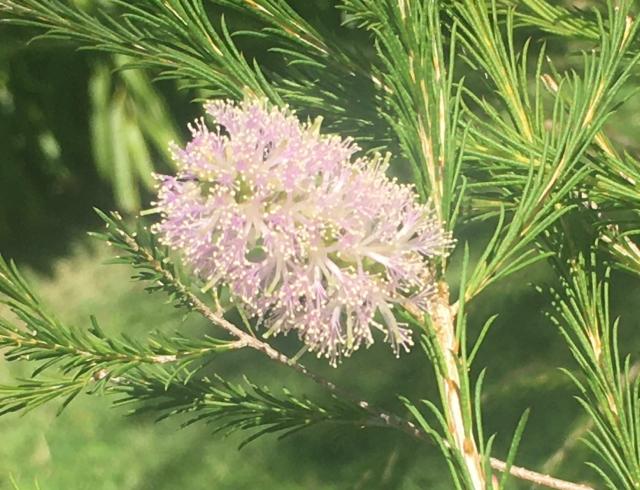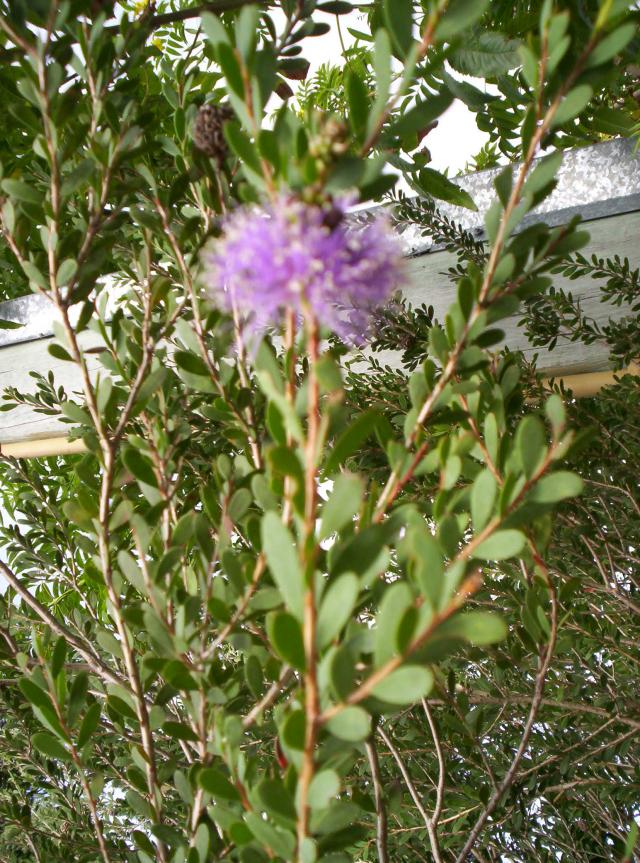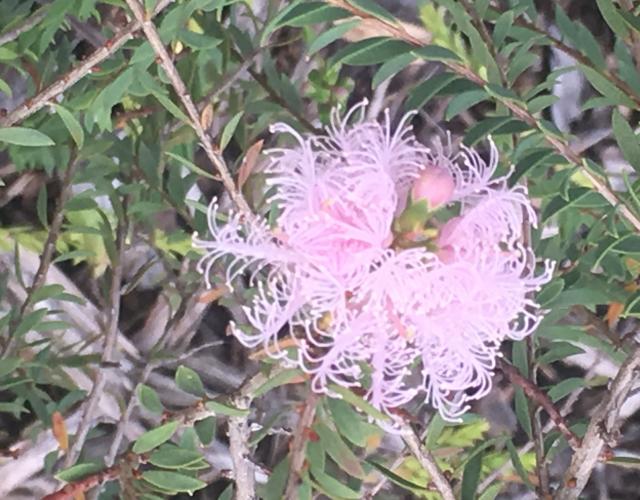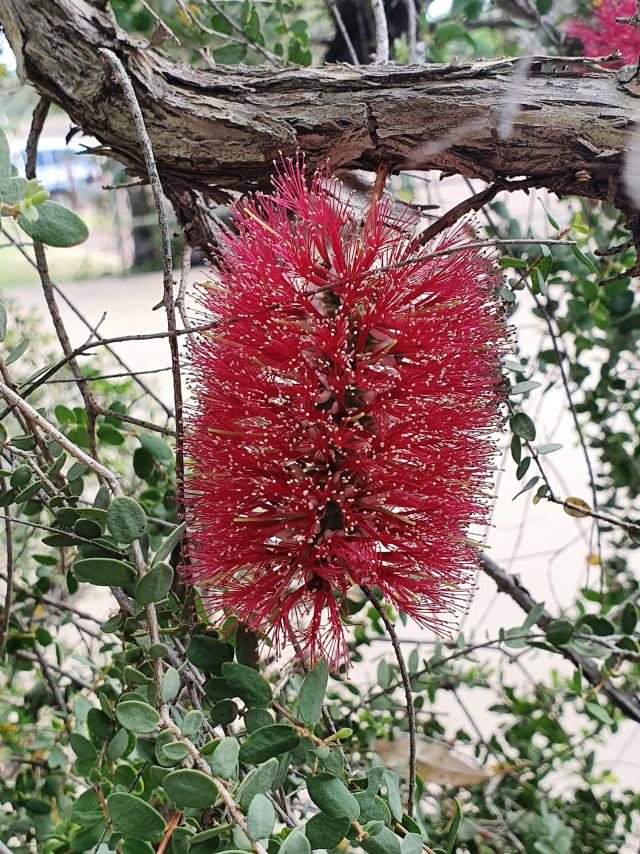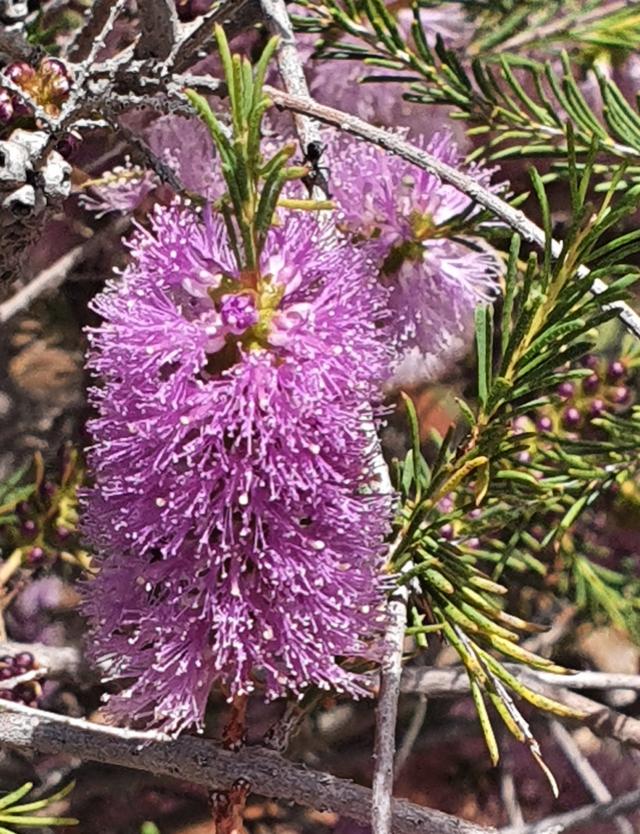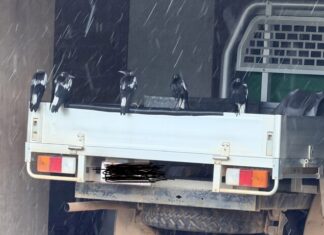If there is Australian Native plant that is very underrated it would be the Melaleuca. With a wide range of flower colours, ability to grow quite wet positions and being able to grow to a range of heights. Melaleucas should be a first choice for many new gardeners.
Melaleucas are commonly known as Paperbarks in tree forms and Honey Myrtles in lower growing forms. The names refer to either the flaky bark of some species or the nectar producing flowers of other species. Melaleuca comprises the second largest genus after Eucalyptus with about 230 species.
Some of the most attractive flowering Melaleucas are listed below.
Melaleuca Armillaris Pink is a graceful dense large shrub with fine dark green foliage. Pink brush-type flowers appear through the foliage in Spring and Summer that will attract nectar feeding birds to the garden. This fast growing shrub will up to 3m high and is bushy to the ground making it a useful screen or windbreak plant.
Melaleuca Candy Sparkles is a large but versatile shrub with silvery green leaves and cream-grey papery bark. Masses flowers that can change hues between a dark red to deep pink with white stamens will appear during the Summer and Autumn months but can also have spot flowerings throughout the year. It will require pruning after flowering to maintain a compact habit and healthy new growth. Melaleuca Candy Sparkles should grow to 5m high is a full sun position and can tolerate a range of different soil types including waterlogged areas.
Melaleuca diosmatifolia or Rosy Paperbark is an open shrub with fine dark green foliage. During the warmer months of the year sasses of purple brush-type flowers appear through the foliage. Melaleuca diosmatifolia grows to 3m high in well drained soil and is bushy to the ground.
Melaleuca elliptica or Granite Honey Myrtle is one of the most beautiful flowering of the shrub Melaleucas. It is an open shrub with small round blue grey leaves growing to around 2m high. It would start flowering with the first bit of hot weather every year, producing rich crimson displays of bottlebrush-like flowers along the stems of the plant. This plant is highly bird attractive, and matched with its small silvery-grey foliage, it would be a feature in most gardens.
Melaleuca laterita or Robyn Red-Breast is one of the best bird attracting shrubs to the garden. The flowers are as the common name states bright orange in colour. These Bottlebrush like flowers are up to 8cm long and can appear throughout the year. This small upright shrub should grow to 1.5m x 1m with bright green foliage. For maximum growth a sunny well-drained spot is required.
Melaleuca nesophila or Showy Honey Myrtle is a dense medium sized shrub that is drought and frost tolerant. During spring and summer small but very showy purple to pink pompom-like flowers appear. Another feature of this shrub is the small oblong shaped leaves which contain oils that are fragrant when crushed.
Melaleuca Pink Lace is a hardy compact native shrub with slender bushy branches of tiny grey-green foliage. Soft pink lacy flowers appear along the stems throughout the year. This small shrub should be planted in full sun to encourage flowering and will grow up to 1m x 1.5m in most soil types.
Melaleuca symphyocarpa is one of the most unusual of all of Australia’s paperbarks. In its natural conditions, it will grow upwards of 6m high, but in a normal garden situation, it is a rather wiry, sparse shrub growing to around 2.5m high, best positioned at the rear of a large garden. However, between May and August, this shrub redeems itself by producing a unique display of orange pom pom-shaped, bottlebrush-type flowers.
Melaleuca thymifolia or Thyme Leaf Honey Myrtle is a small growing shrub with small oval bluish leaves. Deep purple feathery brushes appear along the stems throughout the year. This hardy Melaleuca will grow 1m x 1.5m is a sunny average position and is tolerant to light frost and moderate drought once established. Melaleuca thymifolia is suitable for low hedging, native gardens or wildlife gardens.
While many of these Melaleucas may not be available in some local nurseries they should be able to be ordered from specialist nurseries.


